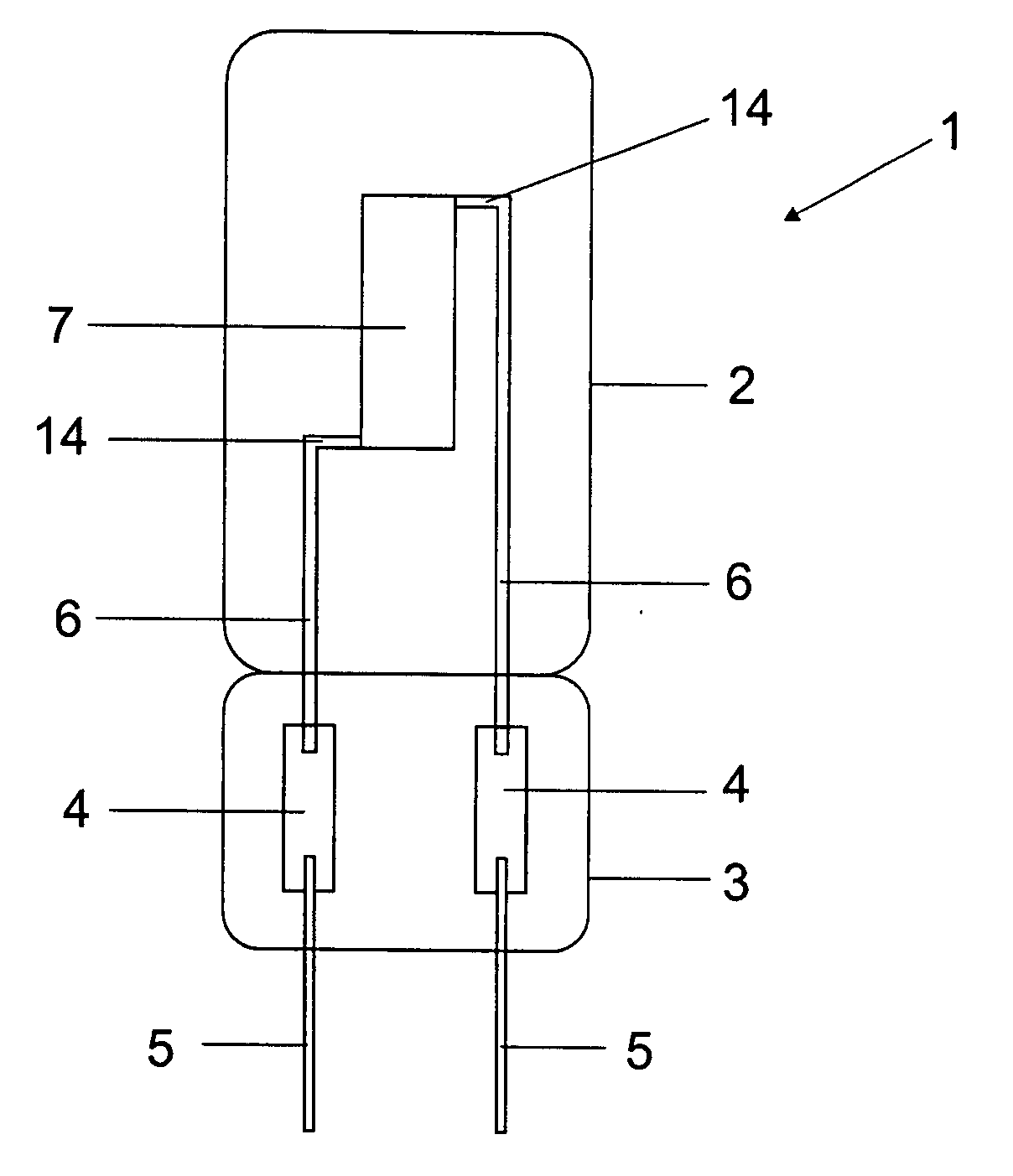Incandescent lamp having a carbide containing luminous element
- Summary
- Abstract
- Description
- Claims
- Application Information
AI Technical Summary
Benefits of technology
Problems solved by technology
Method used
Image
Examples
Example
[0038]FIG. 1 shows an incandescent lamp 1, pinched at one end, having a bulb made from silica glass 2, a pinch 3, and internal supply leads 6 that connect foils 4 in the pinch 3 to a luminous element 7. The luminous element is a singly helically wound, axially arranged wire made from TaC as carrier material, whose non helically wound ends 14 are continued transverse to the lamp axis. External supply conductors 5 are attached outside to the foils 4. The inside diameter of the bulb is 5 mm. The supply leads 6 are either separate parts made from Mo, W or Ta, or they are continued integrally as non helically wound ends of the luminous element. The temperature in the region of the supply leads is typically at most 2300 K. The temperature of the helically wound luminous element 7 is at least 3000 K.
[0039] The incandescent filament, consisting of tantalum carbide, of the lamp shown schematically in FIG. 1 and whose fundamental design corresponds largely to a low voltage halogen incandesce...
PUM
 Login to View More
Login to View More Abstract
Description
Claims
Application Information
 Login to View More
Login to View More - R&D
- Intellectual Property
- Life Sciences
- Materials
- Tech Scout
- Unparalleled Data Quality
- Higher Quality Content
- 60% Fewer Hallucinations
Browse by: Latest US Patents, China's latest patents, Technical Efficacy Thesaurus, Application Domain, Technology Topic, Popular Technical Reports.
© 2025 PatSnap. All rights reserved.Legal|Privacy policy|Modern Slavery Act Transparency Statement|Sitemap|About US| Contact US: help@patsnap.com


